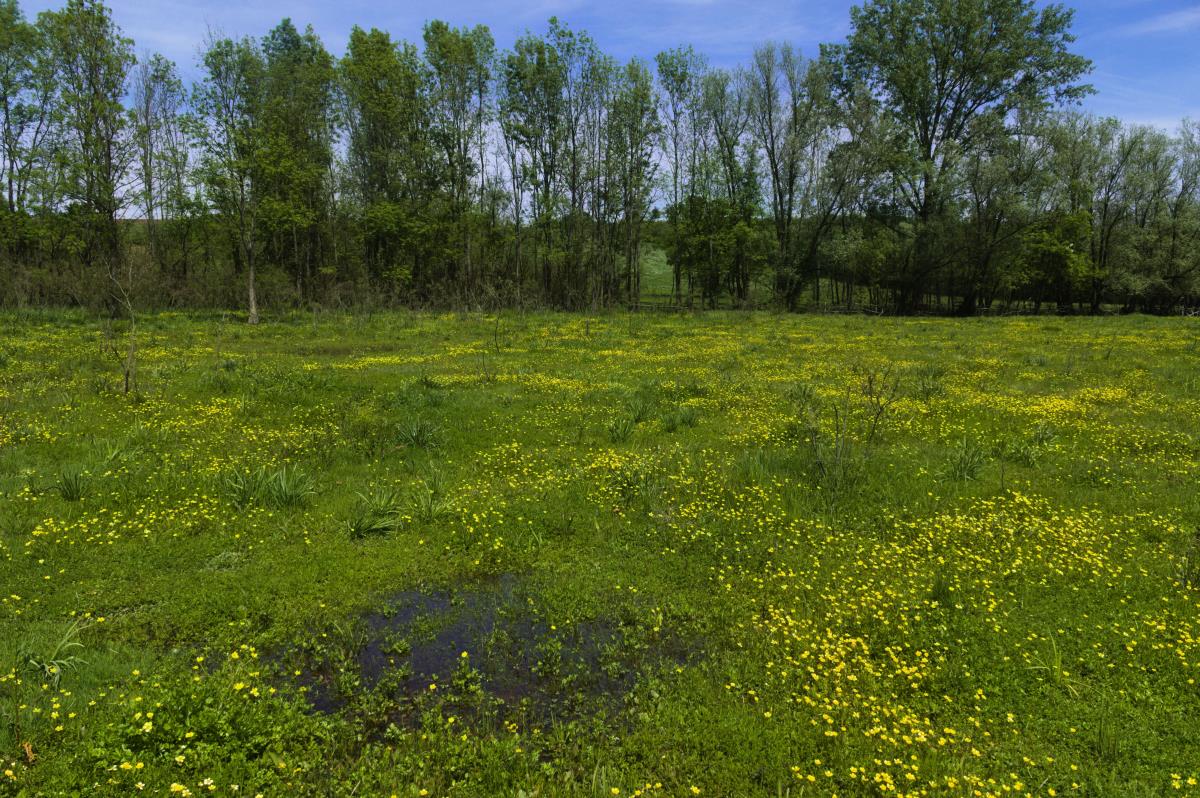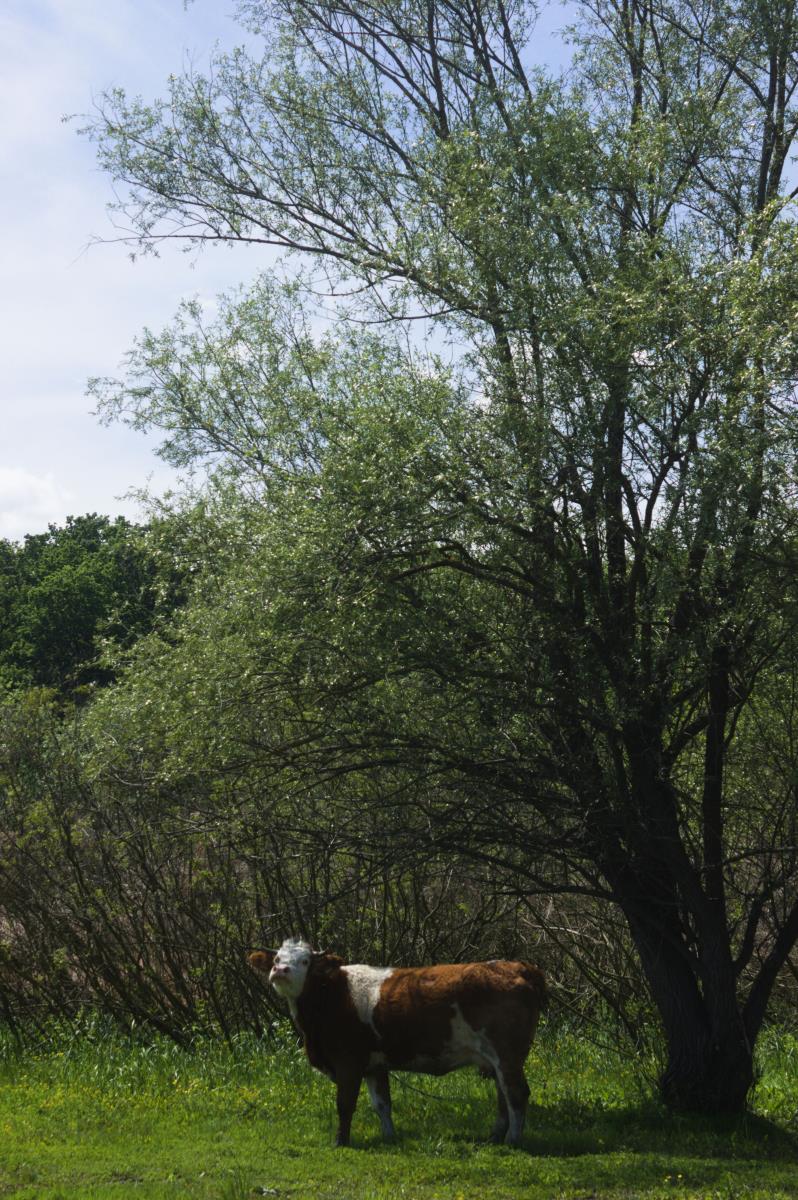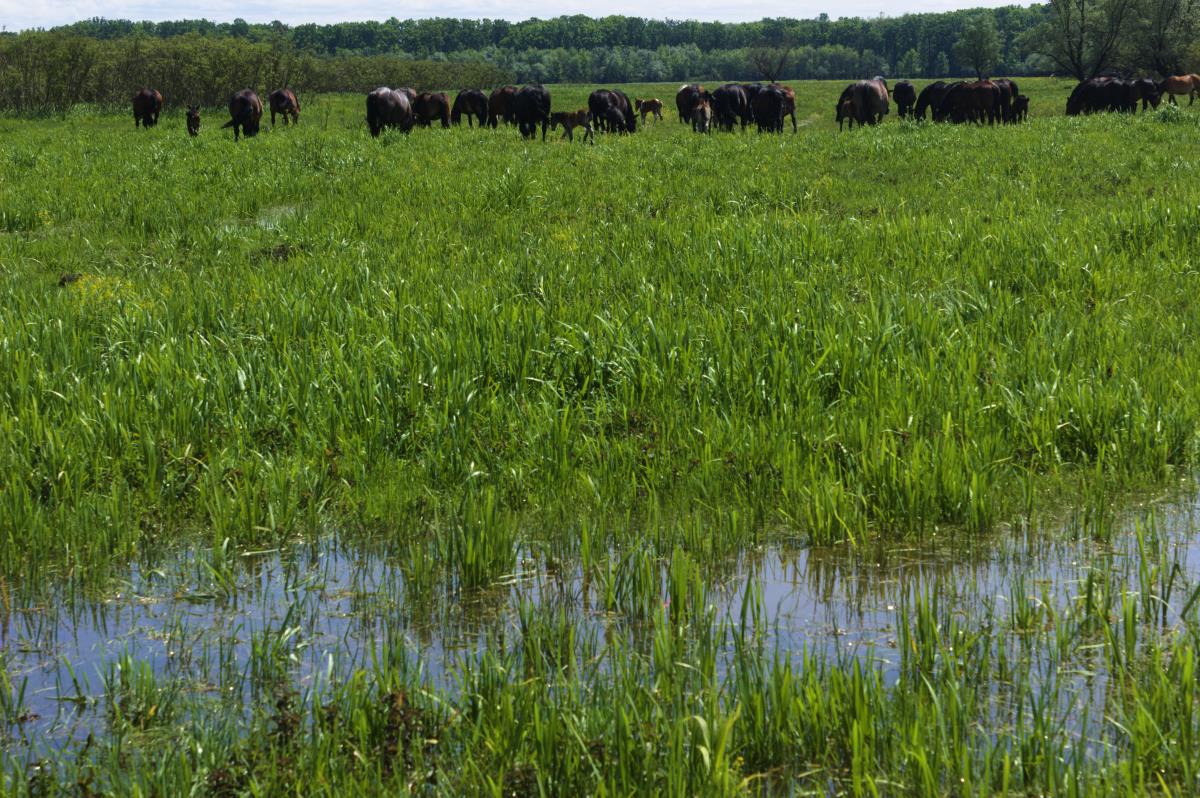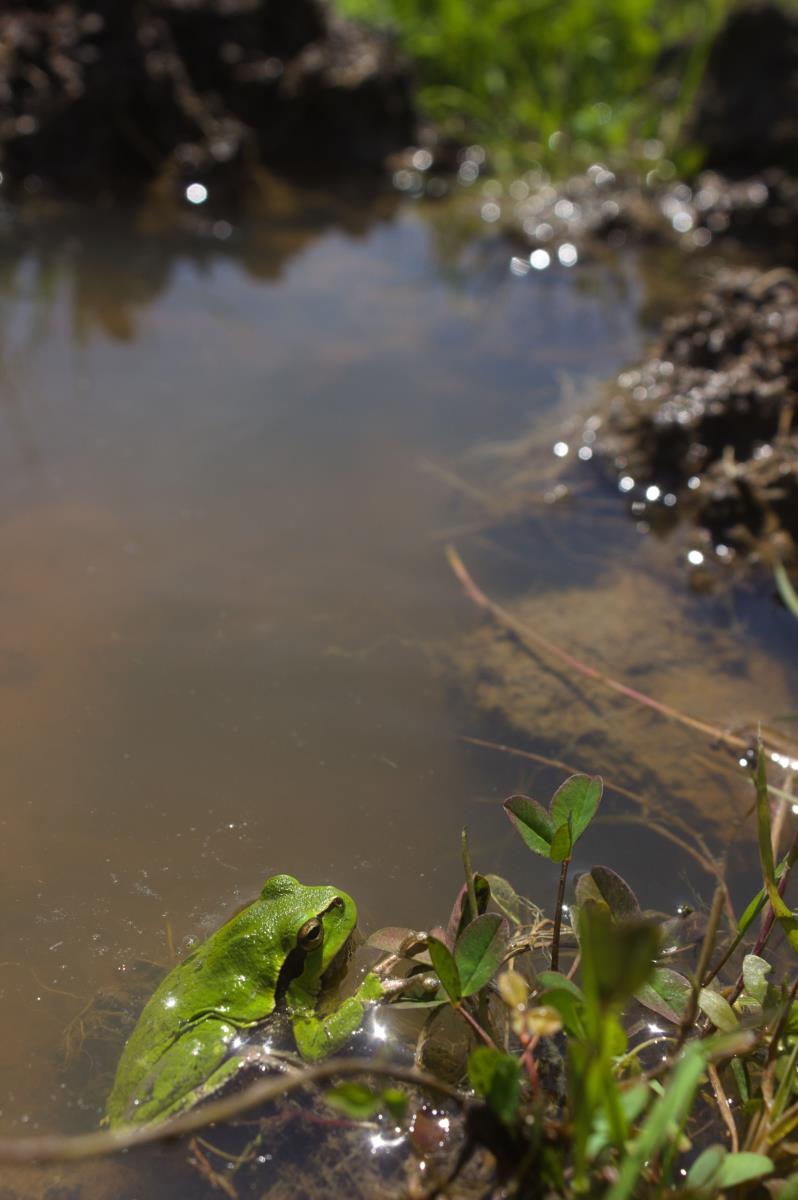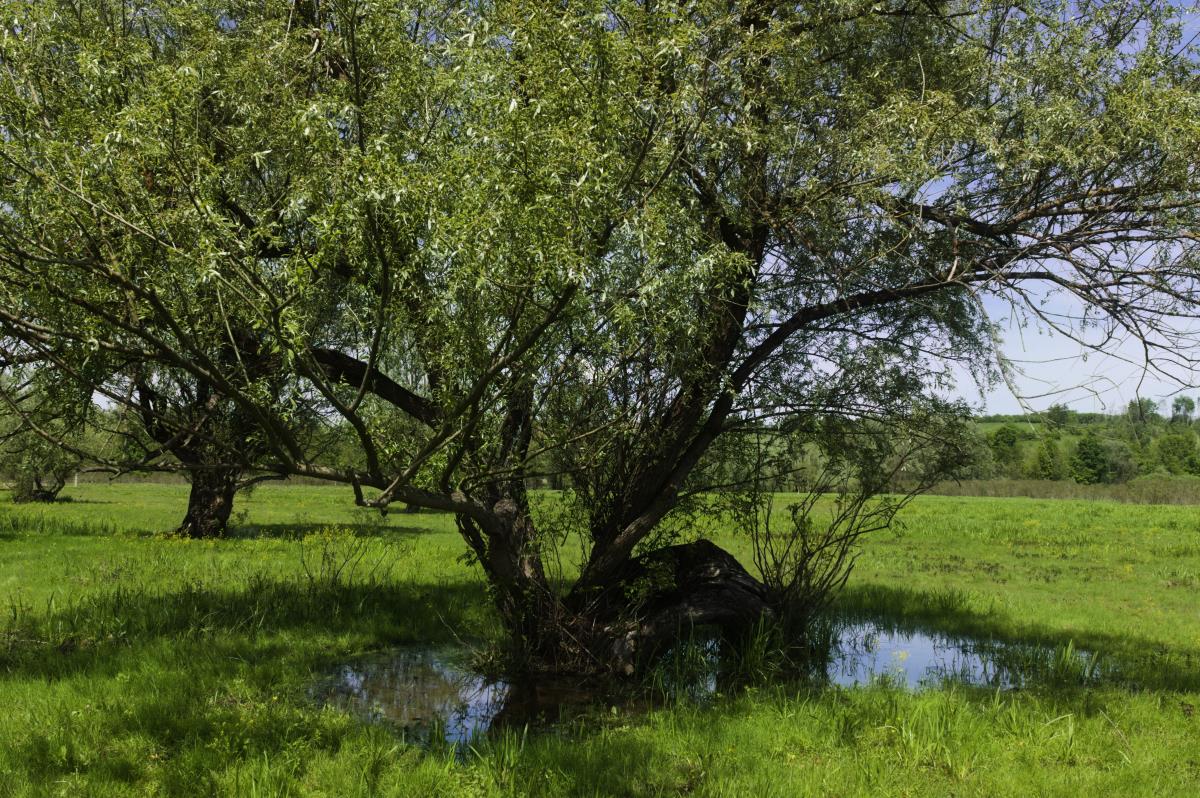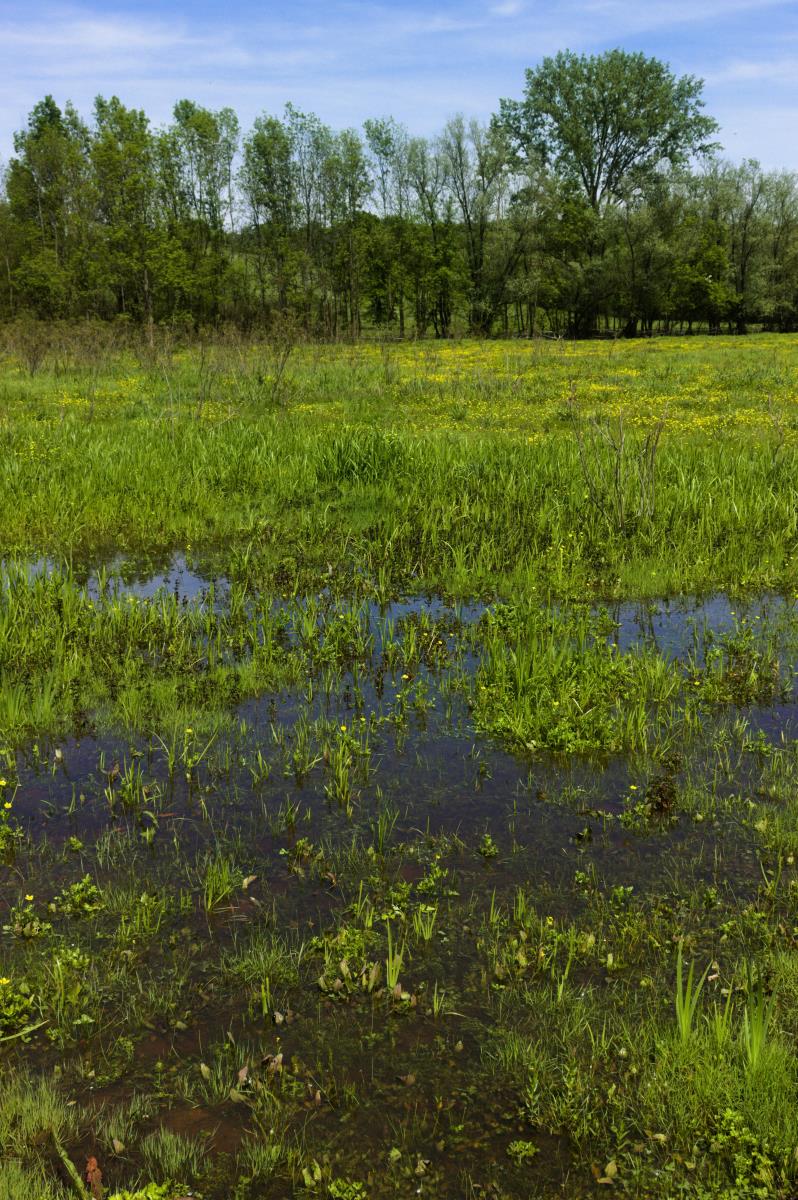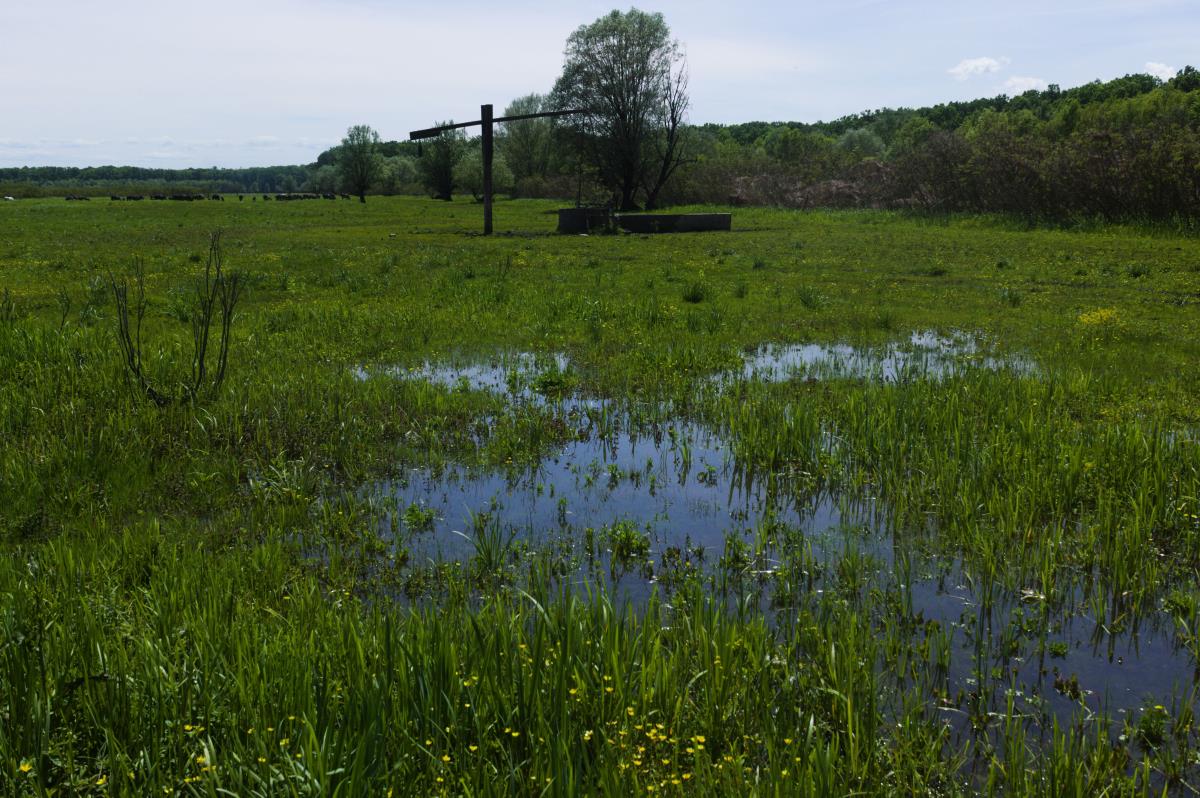PAŠNJAK (PASTURE) IVA SIGNIFICANT LANDSCAPE
Official name: Pašnjak Iva (Pasture Iva)
Category of protection: significant landscape
Year of protection: 2010
Location
The pasture is located near the village of Gorica, 14 km southwest of Nova Gradiška.
History
Pašnjak (Pasture) Iva is state-owned arable land used by local horse breeders of indigenous Posavina horse breed and local cattle farmers. It was declared as a significant landscape and protected at the initiative of the Municipality of Dragalić, Brod-Posavina County and the Public Institution Natura Slavonica in 2010.
Tourism
There aren't many visitors in this area. Recently, more and more groups of cyclists and students from local schools on their field trips have been noticed. Iva is usually visited by groups whose main destination is Prašnik.
Natural values
The area includes 268 hectares of flooded nitrophilous pastures bordered by a flooded pedunculate oak forest and cultivated agricultural plots in the village of Gorica (Dragalić municipality) on the north. The pasture is natural retention and the waters of the Sava River flow in through the Trnava and Draževac canals during high water levels. This, together with the traditional way of farming, is what gives value to Iva. Namely, during longer floods, this is an important area for spawning of Danube basin fish, and after the water withdraws into the riverbed, cattle of local farmers (horses, cows and pigs) maintains wet grasslands that are highly endangered with overgrowth in the Posavina part of Croatia, as this area is being rapidly depopulated and traditional livestock farming is being abandoned. In this area, the cattle maintain grassland vegetation and prevent pasture overgrowth and the spread of invasive species. Part of the grassland is mowed for livestock feeding, thus maintaining the wet meadows of this protected area.
The following habitats have been recorded on Iva: permanent watercourses; wet, nitrophilous grasslands and pastures, and stands of false indigo. The greatest value is represented by wet nitrophilous grasslands and pastures as they are endangered at the European level and protected by the Bern Convention (Resolution 4), and also by a special ordinance within the Republic of Croatia. Here we find meadows of yellowcresses and creeping bent (As. Rorippo-Agrostidetum stoloniferae (M. Moor 1958) Oberd. Et Th. Müller 1961), with typical plants such as creeping yellowcress (Rorippa sylvestris), creeping bent (Agrostis stolonifera), curly dock (Rumex crispus), British yellowhead (Inula britanica), European pennyroyal (Mentha pulegium), creeping cinquefoil (Potentilla reptans); and meadows of clover and dew (As. Trifolio-Agrostidetum stoloniferae Marković 1973) for with typical plants such the strawberry clover (Trifolium fragiferum subsp. bonannii), creeping bent (Agrostis stolonifera), European pennyroyal (Mentha pulegium) and white clover (Trifolium repens).
The false indigo (Amorpha fruticosa) is an alien invasive plant that spreads endangering the indigenous grassland vegetation as there are not enough cattle to graze. The false indigo has to be removed mechanically and by traditional grazing of cattle on Iva.
This protected area is part of the Donja Posavina bird conservation area (HR1000004) of the European ecological network Natura 2000. Here, you can see horses of the indigenous Croatian breed Posavina horse which are bred by cattle breeders from the surrounding villages.
The following habitats have been recorded on Iva: permanent watercourses; wet, nitrophilous grasslands and pastures, and stands of false indigo. The greatest value is represented by wet nitrophilous grasslands and pastures as they are endangered at the European level and protected by the Bern Convention (Resolution 4), and also by a special ordinance within the Republic of Croatia. Here we find meadows of yellowcresses and creeping bent (As. Rorippo-Agrostidetum stoloniferae (M. Moor 1958) Oberd. Et Th. Müller 1961), with typical plants such as creeping yellowcress (Rorippa sylvestris), creeping bent (Agrostis stolonifera), curly dock (Rumex crispus), British yellowhead (Inula britanica), European pennyroyal (Mentha pulegium), creeping cinquefoil (Potentilla reptans); and meadows of clover and dew (As. Trifolio-Agrostidetum stoloniferae Marković 1973) for with typical plants such the strawberry clover (Trifolium fragiferum subsp. bonannii), creeping bent (Agrostis stolonifera), European pennyroyal (Mentha pulegium) and white clover (Trifolium repens).
The false indigo (Amorpha fruticosa) is an alien invasive plant that spreads endangering the indigenous grassland vegetation as there are not enough cattle to graze. The false indigo has to be removed mechanically and by traditional grazing of cattle on Iva.
This protected area is part of the Donja Posavina bird conservation area (HR1000004) of the European ecological network Natura 2000. Here, you can see horses of the indigenous Croatian breed Posavina horse which are bred by cattle breeders from the surrounding villages.
Sights
An observatory for visitors was built on the pasture in 2018. It was built in the form of a watchtower from the time of the Military Frontier. The project was co-financed by the Ministry of Tourism of the Republic of Croatia, the main project partner was the Brod-Posavina County, and other partners were the Public Institution Natura Slavonica and the Municipality of Dragalić. On Iva you can also see a well with a sweep, a traditional feature of the Slavonian landscape, used to provide water to livestock in the dry season. Thanks to its construction, the sweep facilitates water extraction.
Known about the unknown
The moor frog (Rana arvalis wolterstorffi) was recorded on the pasture for the first time in 2008. This was then the easternmost finding of this frog in Croatia. Males of this species are very interesting as they turn blue during the mating season.
The area is open for visitors:
- Working hours (for visitors): groups need to be announced
- Prior notice: Group visits must be announced on the telephone numbers 035 409 043 or 035 409 042 or email zastita.prirode@bpz.hr or on the link: http://www.natura-slavonica.hr/hr/zasticena-podrucja1/najava-grupnog-posjeta .html
The area is managed by Public institution for management of protected parts of nature of Brod-Posavina County
- Address: Petra Krešimira IV. br. 1, 35000 Slavonski Brod, Hrvatska
- Telephone number: +385 35 409 043 ili +385 35 409 042
- Official website: www.natura-slavonica.hr
